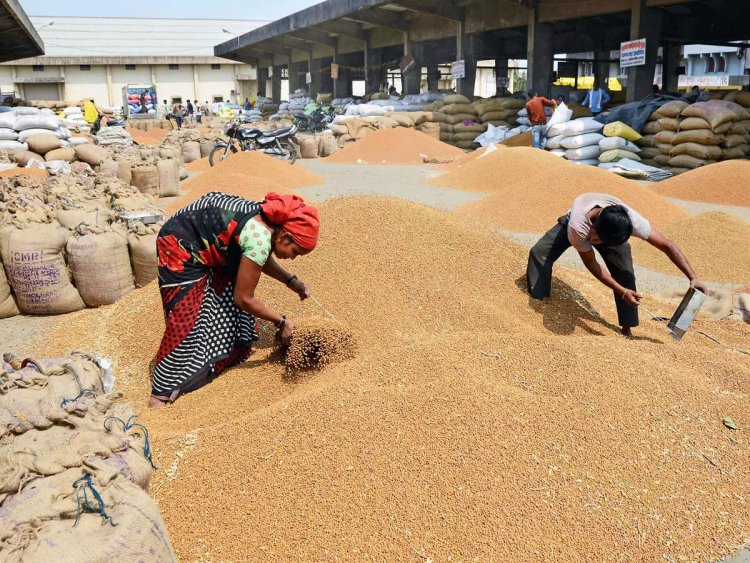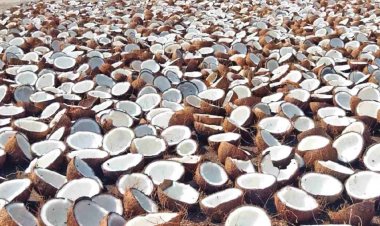The price and procurement data of wheat raise questions on government's production estimates
These measures for controlling the price of wheat would seem drastic since the government has given no indications that supply shortages are likely due to a fall in wheat output. In fact in its second advance estimates of production of foodgrains for 2022-23 in February the government had indicated that the principal rabi crop would record a record level of output of 1121.8 lakh MT.

On 12th June, the Ministry of Consumer Affairs imposed stock limits on wheat, the first time it had done so after 15 years. In its official notification announcing the introduction of stock limits, the Ministry stated that the decision was taken to manage the overall food security and to prevent hoarding and unscrupulous speculation. The stock limits are applicable to traders/wholesalers, retailers, big chain retailers and processors for all states and union territories, which would be in place until 31st March 2024 for all States and Union Territories. Accordingly, the traders/wholesalers are allowed to hold 3000 metric tonnes (MT) of wheat while retailers are allowed to hold 10 MT of each of the retail outlets. The big chain retailers are allowed to hold 10 MT for each outlet and 3000 MT at all their depots, while the processors can hold a maximum of 75% of annual installed capacity or quantity equivalent to monthly installed capacity multiplied by remaining months of 2023-24, whichever is less.
Each of these entities are required to declare the stocks position to the Wheat Stock Monitoring System of the Department of Food and Public Distribution on a weekly basis. In case the current level of stocks held by them are higher than the prescribed limit, they must bring it in conformity with the prescribed stock limits within 30 days of issue of this notification.
In order to improve supplies of wheat, the Central Government also decided to offload 15 lakh MT wheat from the central pool stock under Open Market Sale Scheme (Domestic) to flour mills/private traders/bulk buyers/manufacturers of wheat products through e-auction to control retail prices of wheat. On June 23, the government directed the Food Corporation of India (FCI) to conduct the e-auctions of wheat and rice “to check the inflationary trends in prevailing retail prices as a part of market intervention to control the price of wheat and rice” commencing 5th July. In this e-auction, any buyer can bid for a maximum quantity of 100 MTs, and to accommodate small wheat processors and traders, the minimum quantity has been kept to 10 MT. The base price has been fixed at Rs. 2150 per quintal for “fair average quality” wheat, almost a sixth lower than the average wholesale price during the week in which this announcement was made.
These measures for controlling the price of wheat would seem drastic since the government has given no indications that supply shortages are likely due to a fall in wheat output. In fact in its second advance estimates of production of foodgrains for 2022-23 in February the government had indicated that the principal rabi crop would record a record level of output of 1121.8 lakh MT. In the third advance estimates issued towards the end of May, the estimated level of output was revised upwards to 1127.4 lakh MT. These estimates showed that in 2022-23, wheat output growth would the highest in the past five years, i.e. since 2017-18. This was a happy augury, especially after the fall in output in 2021-22. The commencement of the rabi marketing season (RMS) towards the end of the month carried forward this upbeat mood regarding wheat supplies. Government estimates showed that wheat procurement could be almost 342 lakh MT as against 187.9 lakh MT actually procured during RMS 2022-23. Procurement appeared to be on track until 9th May, when nearly 252 lakh MT was procured. This figure was 75 lakh MT higher than the level of procurement on corresponding date during RMS 2022-23.
However, the first alarm bells regarding wheat market conditions began ringing since mid-May. FCI data indicate that from then on, procurement of wheat was down to a trickle and by the end of May only 262 lakh MT could be procured by the Central and State agencies. More significantly, the procurement season that usually lasts until June, seems to have ended even before the end of May in the current RMS. The season appears to have ended with actual procurement falling short of the government’s target of nearly 342 lakh MT by almost 25%.
Wheat procurement in the current RMS was, thus, the second lowest since RMS 2016-17 when about 230 lakh MT was procured. In fact, in the five years prior to the decline in wheat output last year, the average level of procurement was over 366 lakh MT, considerably higher than the level of procurement this year. Moreover, during RMS 2021-22, a record level of procurement of 433.4 lakh MT was recorded, and that too, with a much lower level of wheat output than the government has estimated for the current year. But while there are no comments from the government on this incongruence between its production estimates and the actual procurement of wheat, there are several indications as to why this could have happened.
Although the government was upbeat about wheat production this year, the weather played the villain yet again as unseasonal rains in the major producing areas during March and April adversely affected the output. Taking cognisance of this eventuality, the Central government announced relaxations in quality specifications of wheat being procured, especially the lustre loss due to the rains. As in the previous year, wheat of inferior quality has reached the silos of the FCI, while private traders and the milling industry has bought better quality wheat at prices higher than the minimum support price. The decision of the industry to buy outright from the market has also been influenced by their negative assessment of the government’s ability to beef up wheat supplies through its open market operations, namely, under the Open Market Sales Scheme. One possible explanation for this sentiment is the significant reduction of wheat stock in central pool, which was down to a mere 83.5 lakh MT in April this year, the lowest level since 2008, the year in which stock limits on wheat was last introduced. Further, wheat stock in central pool was 314 lakh MT in June, marginally higher 311 in June 2022, the lowest level since 2008.
The decision of the private traders and the milling industry to remain exceedingly active during the current procurement season appears to have been guided by their assessment that wheat production had declined in 2022-23, to a level even lower than in 2021-22. According to the Roller Flour Millers’ Federation, India’s wheat production was at least 10% lower than the government’s third advance estimate of 1127.4 lakh MT. Given the trends in the levels of price and procurement of wheat that are currently being seen, the industry’s assessment about the level of wheat production seems to be more realistic.
The current wheat market conditions show strong possibilities of supply shortages emerging in the ensuing months. Thus, even before the inflation has dropped below the RBI’s comfort zone, cereal prices may be working their way up once again. The wheat market is already on the boil and paddy output seems to be on a knife-edge, given the progress of the monsoon in the past weeks. Of course, the government has responded promptly by imposing stock limits on the commodity as a measure to prevent any speculation. It should also be prepared to use the Essential Commodities Act at an appropriate juncture so as to ensure that speculative activities can be effectively countered.
(Dr Biswajit Dhar is Former Professor, Jawaharlal Nehru University and Vice President Council for Social Development)



 Join the RuralVoice whatsapp group
Join the RuralVoice whatsapp group







































